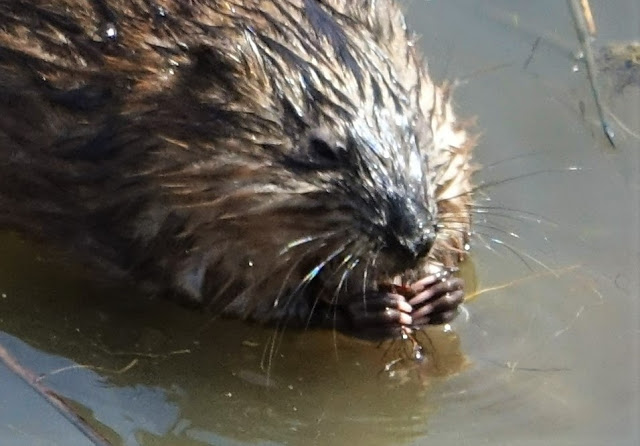The muskrats Ondatra zibethicus who live on the pond are semi-aquatic rodents.
They eat mostly plant matter, but also smaller critters that they find. To eat, they have a thumb and four fingers -- with claws -- to grasp food. The back feet are larger and have five webbed fingers that help swimming in ponds, lakes, and rivers. They swim under water hunting for vegetation that they gnaw and chew with large incisor teeth located in front of their cheek. Or, they may sit on shore chewing terrestrial grasses.









